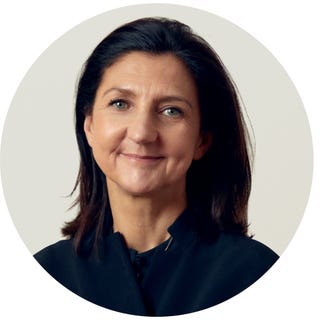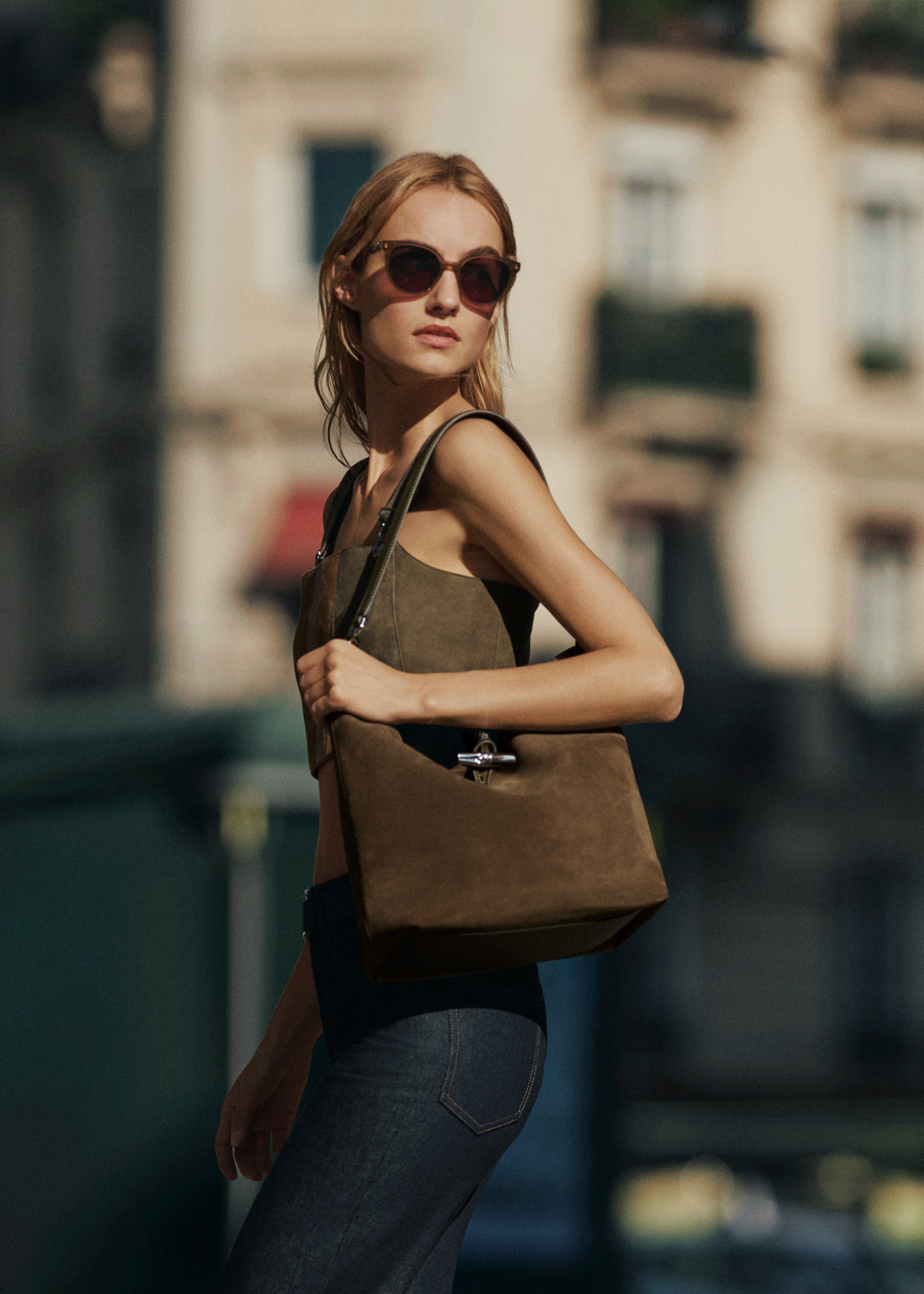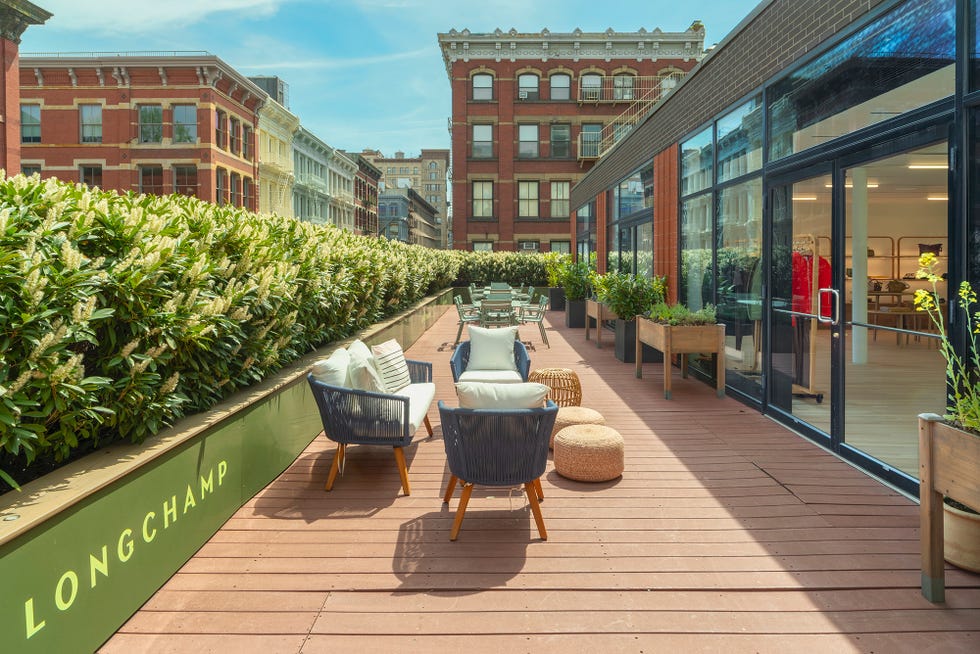Longchamp Is Having a Moment—Again

Everyone remembers their first Longchamp bag—that is, if you were lucky enough to cop one. The French leather goods brand, particularly its iconic Le Pliage line, became ubiquitous in the 2000s thanks to a mix of factors: a relatively accessible price point (especially pre-euro), classic design, and unmatched versatility. Beloved by students, celebrities, and fashion lovers alike, the accessories earned cult status for their durability, practicality, and undeniable cool—a certain je ne sais quoi, if you will. Here, artistic director Sophie Delafontaine, events lead Juliette Poupard, and CEO Jean Cassegrain discuss the family legacy that has made Longchamp more relevant than ever.
On reimagining the brand for a new era
Sophie Delafontaine: Every collab affords us the opportunity to mix the DNA of the brand and part of history with the know-how of the people we are partnering with. From Parisian architecture, to artisanal craftsmanship, to the story of our grandparents opening a tobacco shop and hand-covering pipes in leather, our heritage offers a ton of inspiration to draw from.
On the ideal day in Paris
Juliette Poupard: The day starts at the bakery—maybe something quick on the go, like a pain au chocolat, before heading to the office. Then it’s straight into meetings with the various markets. We always try to have lunch together at Café Longchamp, right at our headquarters. It’s special, because the whole team comes together—my uncle, my mom, my cousins. Everyone’s there, and it really brings the office to life. Then I hop on my bike and race home just in time for a goodnight kiss with my baby.

Jean Cassegrain: We hardly go out anymore because we have the café right here. We even have a gym—we live like a cult. [Laughs]
On the biggest challenges Longchamp has overcome
JC: Our everyday challenge is to continually reinvent the brand—keeping it current, while staying true to our core values. We constantly ask ourselves: What is a contemporary interpretation of our values? The history is so rich that it can be reinterpreted over and over again with a slightly different angle and a different touch.
On the enduring popularity of the Le Pliage bag
SD: It’s impossible to explain, but it’s a bag that truly transcends generations—it’s super universal and loved all around the world. It’s very iconic, very...


SD: It has a strong character, but in a very effortless way. That’s what makes it truly unique and timeless. Creating something like that isn’t easy.

Alexa Chung carries a Longchamp Le Pliage bag in 2011.

JC: We didn’t do anything special—it’s not a phenomenon that we manufactured. In fact, I think if you wanted to manufacture it, that would be difficult. A lot of people have adopted it because of its uniqueness and its simplicity.

JP: It’s very functional.

SD: So efficient, but with a strong identity.

JC: Which is the most difficult thing to design.
On where they find creative inspiration
SD: From the very beginning, our grandmother was really involved. She loved discovering new artists—art has always been a big source of inspiration for us. We attend fairs, meet artists, and seek out new talent. We love blending art with our own universe. Art is everywhere: in our office, in our boutique, and in everything we do. I meet with Jean nearly every two weeks to discuss the collection. We ping-pong ideas off each other and really collaborate, refining our vision.

A model holds a Le Roseau M Hobo bag.

JP: We’ve been in the office since we were born. I spent most of my afternoons after school at my grandmother’s office, playing in the storage rooms, always involved in everything happening around us. I also spent many hours in my grandfather’s office, where he’d show me his new designs and explain them to me. Now, when Sophie is working on her creations, she doesn’t always ask for my opinion, but I always offer it. Sometimes it works, and sometimes it doesn’t. [Laughs] When it came time to join [Longchamp], I wanted to feel prepared and ready to contribute. It was a huge decision—perhaps the biggest I’ve ever made—but when the right opportunity came along, I knew it was the right time to step in. And it was the best decision I ever made.

SD: With the new generation—Juliette and her cousin—it’s invaluable to have their point of view on where Longchamp should go. Their input is crucial for the brand’s future.
On their favorite collaborations
SD: Tracy Emin in 2004 was a turning point for us. It was the first time we were so deeply involved in the creation of a product imagined by an artist. It felt like a revolution in our workshop, because we had to understand and refine every detail of her vision. Then, with Thomas Heatherwick, our first collaboration was to design a bag that could zip and extend—a highly technical project, more about engineering than fashion, almost leaning into architecture. It was such a success that we later asked him to design our Soho store.

JC: It’s probably the most spectacular [store] in the city. He also designed the Vessel and Little Island.

SD: When you enter Longchamp, you’re in for a unique experience, where every corner reveals a new artist. It’s a way of integrating art not just into our products, but into every detail of the brand.

JP: We have artwork on every floor of the office, which sparks our curiosity.

The rooftop of Longchamp’s newly renovated flagship store in New York City.

JC: The phone has significantly changed customer needs. Ten years ago, people wanted wallets that could hold 20 different credit cards. Now, everything is stored in your phone. As a result, the size of bags has shrunk.

SD: When I started, every active woman needed a large bag to fit things like a big calendar. Today, that’s no longer the case—functionality has evolved. Now, larger bags are making a comeback. We adapt!
On what they find most fulfilling in their work
JC: It’s incredibly rewarding to build the brand together and see new people around the world discover it. We’re especially proud when we introduce it to a new market and help it gain recognition.

SD: What’s really special about being a family business is the creative freedom it gives us. We can follow our instincts and do things with heart, exactly the way we believe in. For me, having had the opportunity to work with our parents over many years was a real gift. Now, working alongside my brother—and seeing Juliette and my nephew already involved—I truly feel that sense of transmission. It means a lot to me and gives me strength every day, knowing the next generation is here and ready to carry things even further.

JP: There are many little things every day that make me happy. When I first joined, I was really proud to see how the relationships we have at work are exactly the same as outside—genuine, warm, and grounded in shared values. That gave me a real sense of safety and well-being. I still remember my first event—seeing people walk in with smiles, and even a queue outside—it was such a special moment. It made everything feel real.

SD: What’s truly important is preserving the quality and spirit of the brand. The product should speak for itself—elegant, well-made, and authentic, with that subtle something that sets it apart. That’s what I constantly strive to maintain.

JC: We want to be known as a brand that creates products made to last—pieces you’ll cherish for years and eventually pass down to your child.
These interviews have been edited and condensed for clarity.
elle



